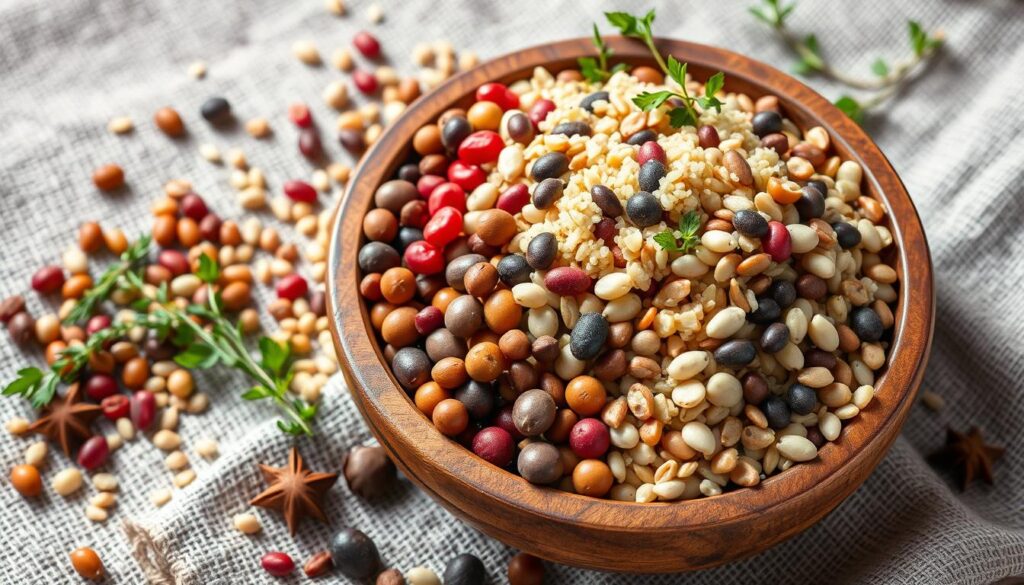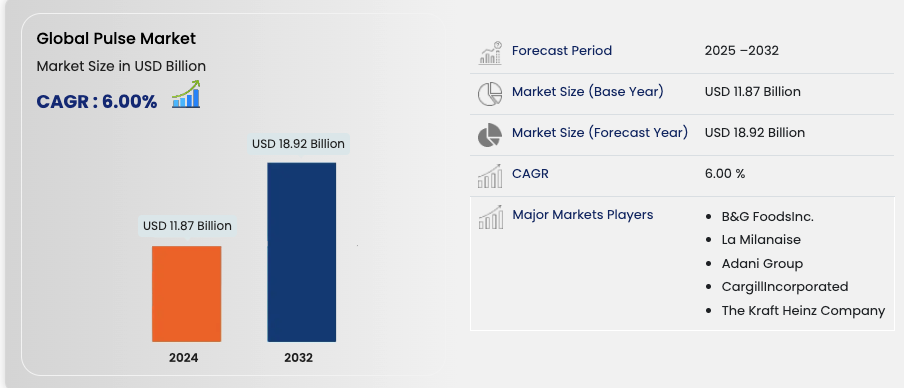How Pulses Are Redefining the Future of Plant-Based Eating
“Let food be thy medicine and medicine be thy food,” Hippocrates used to proclaim centuries ago. It rings even more true today, like never before as cultures are changing the manner in which people consume toward sustainable and healthier options. Among the numerous foods spearheading this change, pulses within a plant based diet have become a silent but surging force. Lentils, beans, chickpeas, and peas were once maybe centered on the doldrums in terms of nutrition, sustainability, and food futures.
Plant based diets are no longer an exotic idea just for vegetarians and vegans; it is a worldwide phenomenon. From upscale European kitchens earning Michelin stars to street vendors in Asia, pulses are being recognized not only for their flavor but also for their unmatched health and environmental benefits. If you’ve ever wondered why these small seeds are attracting such big attention, the answer lies in their unique ability to nourish both people and the planet.

What Makes Pulses in Plant Based Diet One of the Best Sources of Nutrition?
In an era when greenwashing diet fads and superfood hype clutter consumer eyes, pulses offer some clarity and simplicity. They are neither imports nor complex utilities. They are foods that most of us grew up knowing and are consumed all over the world, with cultural significance attached. Yet, when held to some light, their nutritional content seems to be just marvellous.
Take pulse nutrition, for instance. With almost 18 grams of protein in an average cooked lentil serving, more-so-animal-food-type of protein, lentils miss the surplus saturated fat and cholesterol. Add to this healthy amounts of dietary fibre, iron, potassium, magnesium, and folate, and you begin ticking every box of modern dietary needs. For endurance sportsmen, busy working individuals managing hectic lives, or families who desire an improvement in diet quality, pulses offer a reliable reference point. Unlike highly processed supplements, they deliver protein in the purest form.
Moreover, pulses have a low glycemic index, which slowly releases sugar and hence do not cause spikes and dips in blood sugar levels. That makes them a goldmine for diabetes or weight patients. In short, if you were requested to name one food that could guarantee good health generation after generation, you would find it difficult to suggest anything better than pulses.
Pulses vs Other Plant Based Protein Sources
The growth in the plant protein market has provided consumers with ample choices like soy, quinoa, nuts, seeds, and even algae foods. Each of them has some utility, but pulses provide a well-balanced mid-level quality that few can contest.
Soy, on the other hand, is high in protein but largely responsible for allergenic issues and heavy processing in other foods. Nuts and seeds are high in nutrients but high in calories, which restricts their application to those who are weight-conscious. Though well known as a complete protein, quinoa is usually costly and less available in most markets.
Conversely, pulses are cheap, flexible, and are almost eaten in many regions worldwide. In richer Indian dal, Middle Eastern hummus, Latin American black bean salad, or Western pea pasta, pulses have been crucial in local cooking for millennia. That cultural acceptability works to their advantage as a new player in the protein game.
So when the question of why opt for plant-based protein comes up, again and again, the answer comes back to pulses. They are highly nutritious, they are globally acceptable, simple to prepare, and above all, they incorporate seamlessly into both present foods and new food technologies.
Are Pulses Good for Health in a Plant-Based Diet?
Let’s take a pause and tackle the most frequent question: Are pulses good for our health? The short answer is an unqualified “yes.” But let’s elaborate further.
Pulses are cholesterol-free and have inherently low fat content. Daily intake ensures heart wellness by lowering the content of bad cholesterol (LDL). They contain a high fiber content, ease digestion, making one feel full for longer, and stabilizing blood sugar levels, all characteristics that perfectly conform to preventive health care.
Findings by global health groups consistently show that pulse-dense diets reduce the rate of cardiovascular disease, obesity, and type 2 diabetes. Animal protein, though, is more expensive in terms of health and environmental expense, while, without compromising nutritional content, pulses provide a greener option.
With lifestyle diseases and obesity issues at the top of the headlines these days, pulses are more than a dinner; they are an investment in lifelong good health. As one very popular saying goes, “An ounce of prevention is worth a pound of cure.” Pulses subscribe to that maxim in simplicity and beauty.
How Do Pulses Contribute to Plant Protein Sustainability Worldwide?
Food choices today are no longer just a matter of individual health, but of the Earth’s health too. And once again, a pulse plant-based diet is at the forefront.
Pulses are nature’s fertilizers. In contrast to most other crops, they possess the special ability to fix nitrogen from the atmosphere into the ground, minimizing dependence upon man-made fertilizers. This makes their cultivation more environmentally and sustainably friendly. Their water footprint is also much smaller than animal protein production, thus being well-suited for water-scarce areas.
The mantra is the sustainability of plant protein. Except for pulses, farmers emit less greenhouse gas, save inputs, and enhance the health of the soil for the next crop. This has a ripple effect to impact the entire agricultural system. To the environmentally conscious consumer and those who realize the danger posed by climate change, selecting pulses is not a food option; it’s an eco-friendly act.

The economic situation also remains the same. As per recent market studies, the worldwide pulses market was USD 11.87 billion in 2024 and is expected to grow to USD 18.92 billion by 2032 at a CAGR of almost 6% in the period from 2025 to 2032. This is not merely consumer demand; it is a general acceptance of pulses as the foundation of sustainable agriculture. Their purpose is not just to feed the masses; pulses are hard at work creating tougher soils, lower environmental pressure, and regenerative agriculture systems.
Pulses Driving Innovation in the Vegan Food Industry
Step into any contemporary supermarket, and you’ll discover a whole aisle lined up with vegan cuisine. From veg burgers to plant-based yogurts, the gastronomic space is changing. Most of these innovations are behind the humble pulse.
Pea protein, for instance, is now the foundation for top-selling plant-based meat substitutes. Chickpeas are being used to supplement pasta, snacks, and desserts. Lentils are being utilized to make gluten-free flours richer, and black beans are changing the entire perception of protein-based baked foods.
This combined effect of pulses and plant foods has brought to the market products that appeal not only to vegans but also to flexitarians who are cutting down on meat intake but not excluding it altogether. Pulses represent a middle ground for them among taste, tradition, and contemporary lifestyle needs. It is this adaptability that sets pulses apart. They do not master one location, one dish, one product line. They can reinvent themselves; they can dictate the very future of food.
What Is the Future of Plant-Based Protein and How Will Pulses Shape It?
While the last decade has been about the discovery of the advantages of plant based diets, the coming decade will be the decade of scaling up plant based diets in a sustainable manner. And the stage will be occupied by pulses in the forefront of this action.
The statistics are persuasive. As per the report, the global plant protein market is expected to grow from USD 23.89 billion in 2025 to USD 34.97 billion in 2030 at a CAGR of 7.9%. This rapid growth suggests an underlying trend in consumers’ preferences. Consumers don’t just want healthy food; they want food that is meaningful to them which includes sustainability, price affordability, and cultural authenticity. Pulses check all these boxes with ease.
Visualize school lunch plates full of chickpea stews as the new norm, lentil soups included in the recovery meal plans of hospitals, and pea protein shakes for athletic performance enhancement. This is not fiction but already in the pipeline in much of the world.
Essentially, pulses in plant based foods are here to stay. It is a new phenomenon that is dictating the future of how humankind will be eating food.
Overall…
According to the old adage, “Mighty oaks from little acorns grow.” In nutritional and sustainability terms, pulses are little seeds with big potential. Pulses embody health, heritage, imagination, and stewardship in one.
Adopting pulses helps not just to enhance diets but also climate-resilient food systems that are just and sustainable. You could be a policymaker, a chef, a farmer, or just an individual who desires to get healthier through food; the role played by pulses in a balanced diet can never be overestimated.
The next time you spoon a ladleful of lentil soup or spread hummus on crispy bread, rest easy, you are a part of a revolution that feeds people and the planet, too.
Do you want to know more about sustainable agriculture methods and pulses’ contribution to creating the food systems of the future? Check out our website for more knowledge and solutions.
